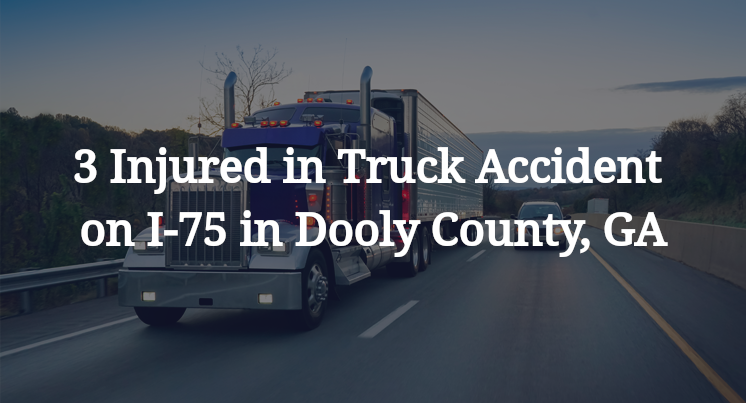3 Injured in Truck Accident on I-75 in Dooly County, GA
Dooly County, GA — April 17, 2025, three people were injured in a truck accident at about noon in Interstate 75 near mile marker 117.
Authorities said an International semi-truck was heading north when it rear-ended a camper being pulled by a Volkswagen, then swerved to the right and hit a Honda CRV and a Toyota Highlander before crashing into another semi-truck.

Three people suffered non-life-threatening injuries in the crash, according to authorities, but it is not clear how they were involved in the accident.
Authorities have not released any additional information about the Dooly County crash at this time. The accident is still under investigation.
Commentary
When a semi-truck rear-ends a slower-moving vehicle and then collides with multiple others on a major interstate, the key legal issue becomes why the truck driver failed to maintain control in the first place. On a highway like I-75, where traffic can vary due to congestion, construction or merging lanes, commercial drivers are expected to manage their speed and spacing carefully. Based on the initial reports, that clearly didn’t happen here.
The crash sequence began when an International semi rear-ended a camper being towed by a Volkswagen. That initial impact alone suggests the truck driver either wasn’t paying attention, was following too closely or failed to respond in time to changing traffic conditions. But what followed — collisions with a Honda CRV, a Toyota Highlander and eventually another semi-truck — indicates that the situation escalated rapidly once the truck was no longer under control.
In crashes like this, the truck’s engine control module is one of the most important tools investigators can use. It will show the vehicle’s speed, braking patterns and throttle input in the moments leading up to and during the crash. If the data shows little or no braking, that could suggest distraction, fatigue or even impairment. Dashcam footage, if available, could confirm how visible the camper was and how quickly traffic conditions changed.
While it’s unclear which of the occupants from the various vehicles were injured, the fact that injuries occurred in a chain-reaction crash caused by the semi’s actions means that liability is likely to fall heavily on the truck driver, and possibly the company that put the truck on the road. Was the driver adequately trained to handle sudden changes in traffic flow? Was he operating under pressure to meet a delivery deadline? Did the company monitor his hours to ensure he wasn’t fatigued? These are the questions that go beyond the scene and speak to whether this crash was the result of an isolated mistake or part of a broader failure in safety oversight.
Rear-end collisions are among the most preventable types of crashes, especially for commercial drivers. The responsibility to anticipate slowdowns and allow enough space is a basic part of the job. When that responsibility isn’t met, and multiple vehicles are damaged and people are hurt, it’s not enough to call it a bad day. It’s a failure of the system that’s supposed to protect everyone sharing the road.
The investigation into this crash should focus not just on what went wrong in the seconds before impact, but on the hours, policies and decisions that led up to it. Because once a semi-truck loses control in highway traffic, the damage is done. The only real way to prevent it is to make sure it never happens in the first place.

“These are essential reads for anyone dealing with the aftermath of a truck wreck”– Attorney Cory Carlson